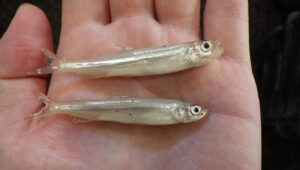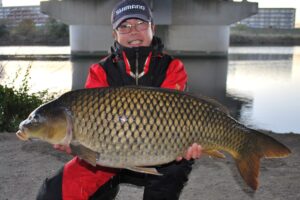Fishing for Spangled Emperor, in Japan and in Australia
The Spangled Emperor is living in the Indo-Pacific coasts. In Japan, this fish is called Hamafuefuki or Taman, and one of the great target fish in southern Japan. When we go across the equator and look at Australia, the same species is also a popular game fish there, too.
In this article, after we review about the species, the comparison in fishing styles for Spangled Emperor will be shown. And then, let us try to analyze what made such a difference.
Species
Hamafuefuki (Spangled Emperor, Lethrinis nebulosus) is widely distributed from the Middle East to the southern part of the far east, and the northern or middle coasts of Australia. In Japan, it lives in the warm current and one can find this fish in the south of Boso peninsula and further west and southern sea coasts. However, large sized fish can only be found in Kyushu, Ryukyu Islands and Izu Islands.
Though the details of the ecology of Hamafuefuki is waiting to be revealed, in the Okinawa area, this fish has spawning time from February to November, and it is said to have active seasons in spring and in autumn. Baby fish are near the coast and as it grows it moves down to deeper, where there are structures such as reefs. The deepest range they dwell in is said to be about 70 m. They mature in 3 to 4 years. The average size is around 50 cm in southern islands, but larger, about 70 - 80 cm, along the coast of the Kyushu Island. Understanding the species, it is imaginable for this fish to be bigger down south, but it is not. The reasons for it are still unknown.
In Australia, according to this site, the common size of Spangled Emperor is 30 to 60 cm, and it grows up to about 90 cm, 9 kg. Though the environment should be different, the sizes of Japanese and Australian ones are about the same.
It is a carnivore species which searches its food on the bottom and it is said to feed on small fish, crustaceans, squids, shells and sea urchins.
Spangled Emperor fishing in Australia
Lure fishing
Since this fish eats various kinds of bait, it gives lure anglers a very wide choice of lures. Simply speaking, Almost any lure, which reaches their depth, can be used, as long as it matches the bait they are feeding. Soft baits, lipless baits, minnows, jigs etc. and even poppers can be an option, under certain circumstances (shallow and windy, according to this site.) Popular sizes are around 100 mm, and bigger than 120 mm are not recommended.
The areas for Spangled Emperor fishing in Australia are reefs with sandy beds. The reefs can provide a lot of places for the fish to hide, and it may allow some fishing in the shallow depth area. Therefore, the selection of lures can include the shallow swimming types. Even if it is said to be a bottom feeder, they can quickly get out of the hiding place to catch their prey.
Fishing with bait
In Australia, web search let me know that the most of fishing for Spangled Emperor or other Emperor species is done from the boat.
According to this website, the popular rigs for Spangled Emperor are paternoster rigs, running sinker rigs with snelled hooks, and any other live bait rigs.
For bait, filet tuna, squid, pilchard tail, are popular and for live bait, yakka (Horse Mackerel) are popular choices.
Hamafuefuki fishing in Japan
Lure fishing
Lure fishing is a popular way to catch this fish. The recommended lures vary, from jigs, minnows and sinking pencils for large size fish. The size of the lures do not exceed 14 cm. Additionally, for anglers who target smaller size, soft lures, such as bug worms of 2 to 3 inch with Texas rig, are coming into the list. The soft swimbait larger than 100 mm is not popular in the salt water fishing, in Japan, and this is why it is not mentioned often. Additionally, there is not so much news about catching it with top water lures, except some limited number of blogs from local anglers mentioning top water games.
However, the general concept of lure fishing in Japan is the same as Australian one.
Fishing with bait
To target Hamafuefuki with bait, casting from the shore is the most popular way. There are two types of approach, one is rigs for sand bed casting and another is rocky coast style casting.
The image below is the rig for sand bed casting.
The main line is either 8 - 14 gou of nylon line (0.87 to 0.62 mm thickness) or 4 - 5 gou of braided line (approximately 0.35 to 0.40 mm thickness). Sinker weight is 100 to 150 g. Hook is a special type called Taman shape (Taman is the Okinawan name of Hamafuefuki), size 16 to 24, with the hook leader of fluorocarbon of 0.57mm. It has a small boom on the sinker to avoid the tangle.
Rod is 4.5 to 5 m, parabolic action for long cast but with a strong belly and butt.
The popular baits are strips of squid, belly part of bonito, small octopus and small mullet.
The Taman hook (Hamafuefuki special hook) has slightly circled hook point, with thick wire, open gape, and a short shank. Since the weight of the hooked bait is heavy, there is no need to pay attention to the weight of the hook. And it is made to be strong with thicker wire.
Another type of rig is for the rocky coast area, shown below.
The rocky coast with a mixture of partial sand bottom is the target area with this style. This rig is similar to the paternoster rig in Australia but the total length is much longer. The rig body line of fluorocarbon (0.57 to 0.66 mm), connects the branch leaders by 1.2 m distance. The hook leader is 0.47 to 0.57 mm of fluorocarbon. The T-shaped connection is done with a three way crane swivel. Sinker is 100 to 150 g.
The rod is 4.5 to 5 m with a Japanese casting Iso rod, with strong parabolic action. Since an angler needs to pull the fish away from the reef or rock immediately after hooksetting, the choice of the reel is a multiplier.
For the bait, belly part of bonito, strips of fish (Pacific saury, Amberstripe scad) and squid, Pacific sand lance (Ammodytes japonicus) and baby squid (not strip).
Differences in fishing styles for the same fish
In this part, I would like to think about the difference of fishing for the same fish, in Japan and in Australia, especially from the characteristics of Japanese fishing.
In Japan, there is not much information about boat fishing with bait for Hamafuefuki. Of course, there are many boats which offer fishing trips in the area where this fish is. As we saw, lure fishing is done from the boat as well as from the shore. But when you turn to bait fishing, Japanese anglers are targeting it only from the shore.
Here, I see the unique attitude of Japanese anglers.
In Australia, fishing is considered to be a game. However you try to catch your target fish, the action is a part of the game. In this respect, there is no boundary between lure fishing and fishing with baits. To reflect it, Daiwa Australia’s explanation about Spangled Emperor fishing lists lure and bait fishing exactly under the same context. It is the reason why all fishing involves catch and release.
In Japan, only lure fishing is considered to be game fishing, and fishing with bait is not the game. Fishing with bait has a strong characteristic of catch and eat, while lure fishing has catch and release. For many Japanese, it is even hard to imagine that fishing with bait connects with the catch-and-release concept.
Therefore, there is a large gap or boundary between lure fishing and fishing with bait among Japanese anglers.
In Hamafuefuki fishing, this fish must have been a very easy fish to get or a very familiar fish species for local people. For them, it is not worth going out with a boat to catch this fish to eat, because they can catch from the shore. With this reason, the boat fishing with bait for Hamafuefuki was not developed for anglers. So, now, angling for it with bait means only shore fishing. As for the game fishing, lure anglers require nice fish, only to establish the game, and they spend money for the game. It led some captains to have services to target Hamafuefuki as a lure fishing target.
As a final point, I dare mention about the cuisine of Hamafuefuki. It tastes very good, definitely, and it is why we keep the catch-and-eat mentality, from the bottom of our heart.
I cannot get away from the fact that I am Japanese, and I won’t…

